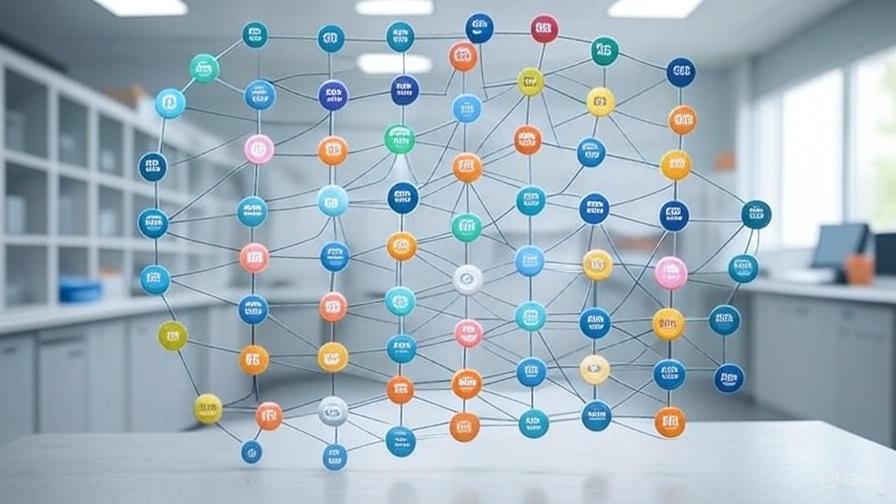Some ideas are so powerful that once you learn them, you start seeing them everywhere. The evolution by natural selection mental model is one of these transformative concepts.
Not only did it revolutionize our understanding of biology, but it also provides a framework for making better decisions in business, personal growth, and innovation. In this article, we’ll explore how this elegant mental model works and how you can apply it to solve complex problems in your life.
Understanding Mental Models as Thinking Tools
Mental models are frameworks that help us understand how things work. They’re like cognitive shortcuts that allow us to make sense of complex systems and make better predictions. When we encounter a new situation, we can apply these models to understand what’s happening and make more informed decisions.
The best mental models are those that apply across multiple domains. They help us see patterns that might otherwise remain hidden. Evolution by natural selection is one such powerful model that extends far beyond biology into business strategy, personal development, and problem-solving.
By adding the evolution by natural selection mental model to your cognitive toolkit, you’ll gain a new lens through which to view challenges and opportunities. This perspective can reveal solutions that might otherwise remain hidden.
The Three Core Principles of Natural Selection
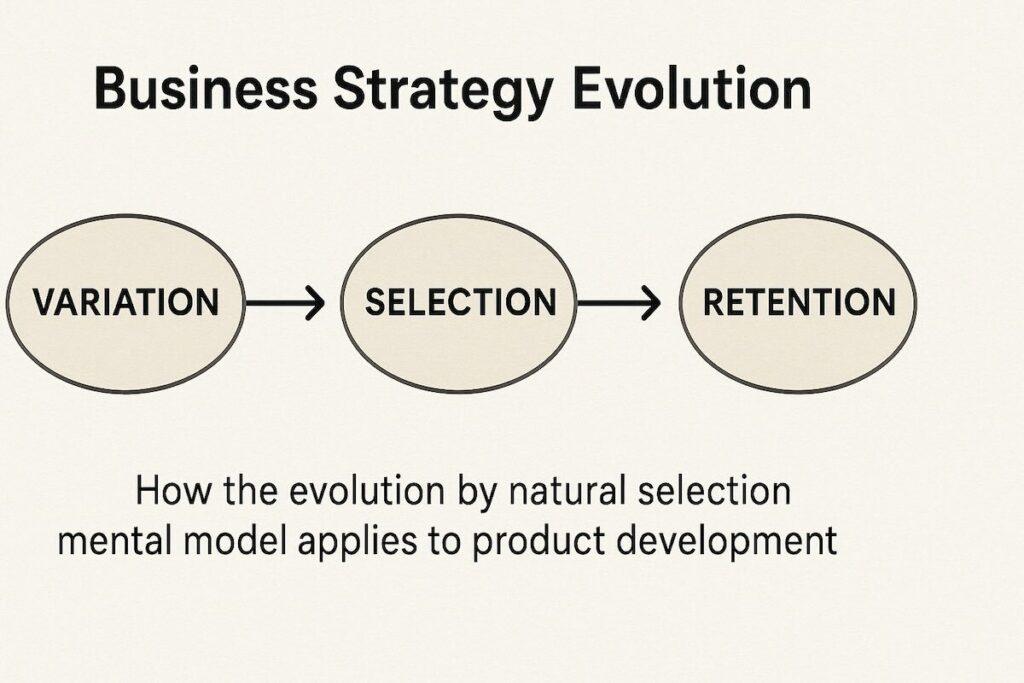
At its heart, evolution by natural selection is a remarkably simple process that creates incredible complexity over time. To understand this mental model, we need to grasp its three fundamental principles:
1. Variation
For natural selection to work, there must be differences among individuals. In biology, this means genetic variation. In business or ideas, it means having multiple approaches or strategies. Without variation, there’s nothing to select from.
Think of this as your idea generation phase. The more varied your options, the better your chances of finding something that works exceptionally well.
2. Selection
Some variations perform better than others in a given environment. Those that fit best with current conditions tend to survive and thrive. This is where the “fitness” concept comes in—not as physical fitness, but as a measure of how well something suits its environment.
This is your testing phase, where you evaluate which approaches work best under current conditions.
3. Reproduction
The successful variations must be able to replicate themselves with high fidelity. In biology, this happens through reproduction. In business or ideas, it happens through documentation, teaching, or scaling successful approaches.
This is your implementation phase, where you double down on what works and ensure it can be replicated consistently.
When these three principles operate together over time, they create a “ratchet effect” that leads to increasingly effective adaptations. What begins as a simple, random process can generate remarkable complexity and effectiveness.
Common Misconceptions About Evolution
Before we apply this mental model, let’s clear up some common misunderstandings that might limit its usefulness:
- Evolution is not goal-directed. It doesn’t “aim” for perfection or have foresight. It only selects what works best right now.
- Evolution doesn’t always lead to improvement. It only leads to better adaptation to current conditions, which may change.
- Evolution works on what can be replicated. Not everything evolves—only things that can create faithful copies of themselves.
- The unit of selection matters. Understanding what’s actually being selected is crucial for applying this model correctly.
As Scott Young points out, “In order to really understand a mental model, it’s not enough to see it in more places. You also have to recognize places it doesn’t apply, even when it seems to.”
Applying the Evolution by Natural Selection Mental Model
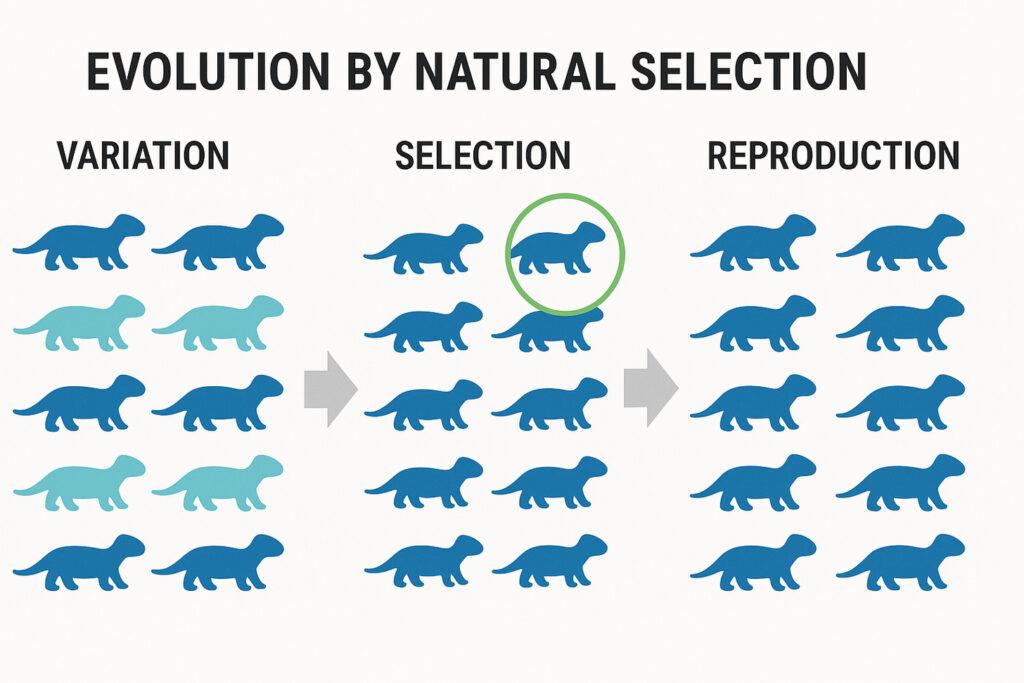
Now let’s explore how to apply this powerful mental model to different areas of your life:
Business Strategy and the Evolution by Natural Selection Mental Model
In business, the evolution by natural selection mental model can help you develop more resilient strategies:
- Create variation by developing multiple business models, product features, or marketing approaches.
- Test and select by using A/B testing, market research, or small pilot programs to see what works best.
- Replicate success by documenting effective processes, training teams on successful approaches, and scaling what works.
Personal Growth
The evolution mental model can transform how you approach personal development:
- Generate variations in your habits, learning approaches, or productivity systems.
- Select what works by tracking results and being honest about what’s effective for you.
- Replicate successful behaviors by building systems that reinforce what works.
For example, if you’re trying to develop a reading habit, you might try reading in the morning, during lunch, and before bed (variation). Track which time results in the most consistent reading (selection). Then build that specific time into your daily routine with reminders and rewards (reproduction).
Innovation and Problem-Solving
When facing complex problems, the evolution by natural selection mental model offers a structured approach:
- Generate multiple solutions without judging them initially (variation).
- Test each approach against clear criteria (selection).
- Document and build upon what works (reproduction).
This approach is particularly powerful for problems where the optimal solution isn’t obvious or where conditions change frequently.
Case Study: Cultural Evolution
One fascinating application of the evolution by natural selection mental model is understanding cultural evolution. As Joseph Henrich proposes, human beings are unique because we evolve not just biologically but culturally—and cultural evolution happens much faster.
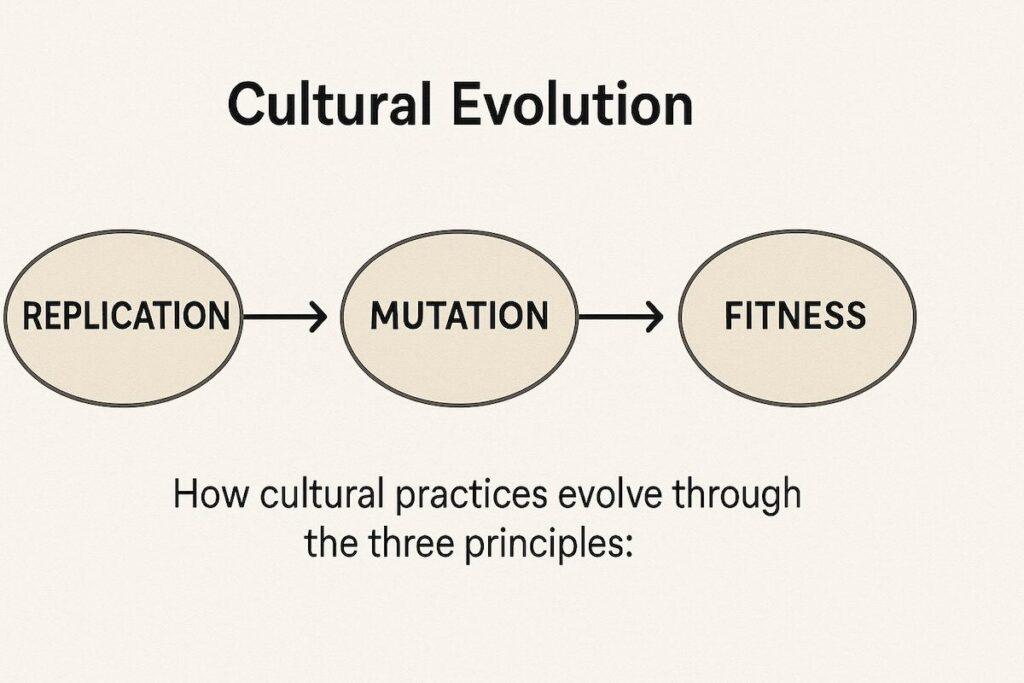
Let’s examine how cultural practices evolve through the three principles:
- Replication: People are expert copiers, particularly of prestigious individuals. We often replicate behaviors ritualistically, even without understanding why they work.
- Mutation: While we’re good at copying, we’re not perfect. Behaviors get modified slightly as they pass from person to person, creating variations.
- Fitness: Some behaviors lead to better outcomes than others. Those that succeed tend to be copied more frequently, especially when practiced by high-status individuals.
This explains why certain traditions persist across generations while others fade away. It also helps us understand why some ideas spread rapidly through populations while others never gain traction.
Understanding cultural evolution can help you identify which ideas are likely to spread and which might face resistance—valuable knowledge for anyone trying to introduce new concepts or change established practices.
Practical Exercises to Apply the Evolution by Natural Selection Mental Model
To help you integrate this mental model into your thinking, here are three exercises you can try:
Exercise 1: Identify Evolutionary Systems
Look around your life and work to identify systems that exhibit the three principles of evolution by natural selection. For each system, ask:
- What is being replicated?
- How do variations occur?
- What determines which variations succeed?
Examples might include product development processes, content creation strategies, or learning methods.
Exercise 2: Create an Idea Evolution Lab
For your next important project:
- Generate 10 different approaches (variation)
- Develop clear criteria for success (selection pressure)
- Test multiple approaches simultaneously
- Document what works and why (reproduction)
This structured approach can lead to better solutions than trying to find the “perfect” approach from the start.
Exercise 3: Analyze Failed Adaptations
Think about products, businesses, or ideas that failed to adapt to changing conditions. For each example:
- What environmental changes occurred?
- Was there insufficient variation to select from?
- Were selection pressures misunderstood?
- Was there a failure to replicate successful adaptations?
Learning from evolutionary failures can be as valuable as studying successes.
Limitations of the Evolution by Natural Selection Mental Model
Like all mental models, evolution by natural selection has its limitations. Being aware of these will help you apply the model more effectively:
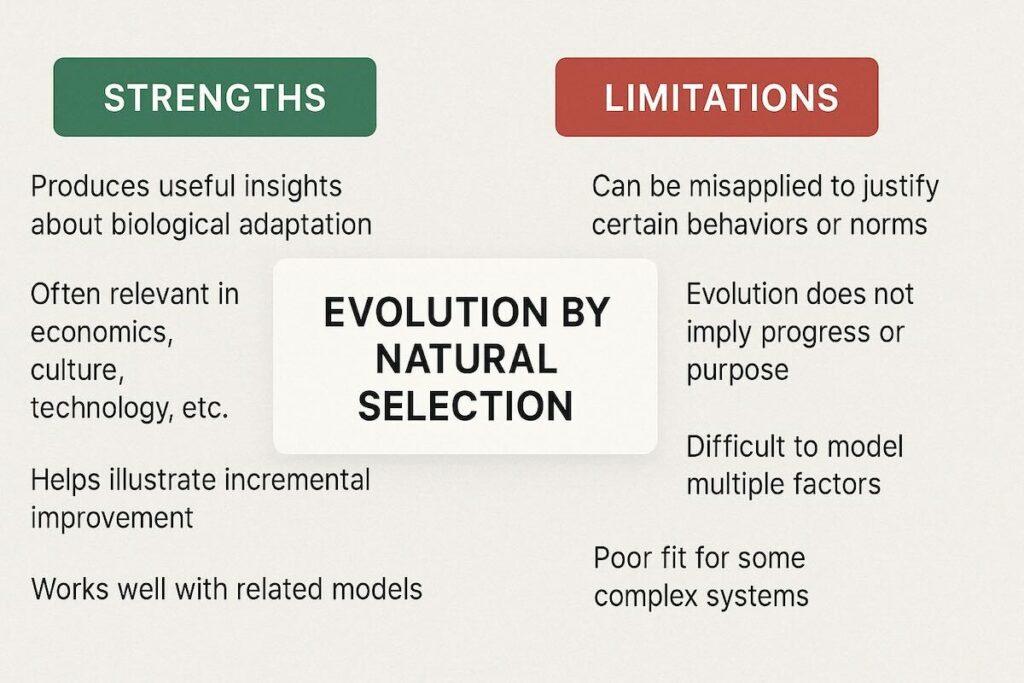
Strengths
- Works well for complex, unpredictable environments
- Doesn’t require complete understanding of all variables
- Can generate unexpected, creative solutions
- Builds resilience through diversity
Limitations
- Can be slower than directed approaches
- May get stuck in “local maxima” (good but not optimal solutions)
- Requires genuine variation to work effectively
- Selection criteria must be well-defined
Understanding these limitations helps you decide when to apply this mental model and when other approaches might be more appropriate. For urgent problems with clear solutions, a more directed approach might work better. For complex, novel challenges, evolutionary thinking often prevails.
Conclusion: Evolving Your Thinking
The evolution by natural selection mental model offers a powerful framework for understanding complex systems and making better decisions. By embracing the principles of variation, selection, and reproduction, you can develop more adaptive strategies in business, personal growth, and problem-solving.
Remember that evolution doesn’t aim for perfection—it aims for adaptation to current conditions. This mindset frees you from the pressure of finding the “perfect” solution and instead encourages continuous experimentation and improvement.
As you integrate this mental model into your thinking, you’ll likely find yourself becoming more comfortable with uncertainty, more willing to experiment, and more adept at recognizing patterns across different domains. These are valuable skills in our rapidly changing world.
